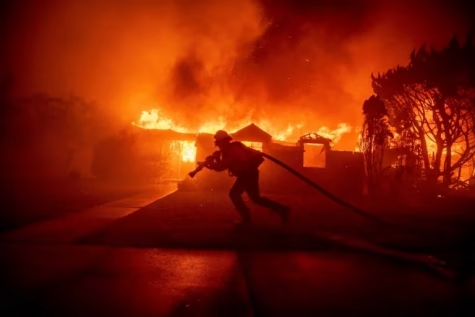Trump’s Executive Order: Prioritizing People Over Fish in California’s Water Crisis
On January 20, 2025, President Donald J. Trump signed a memorandum directing federal agencies to prioritize human needs over environmental considerations in addressing California’s longstanding water crisis. The directive, titled “Putting People over Fish: Stopping Radical Environmentalism to Provide Water to Southern California,” reinitiates efforts from Trump’s first administration to reroute water from Northern California’s Sacramento-San Joaquin Delta to drought-stricken regions in the Central Valley and Southern California.
Background and Controversy
During his first term, Trump’s administration faced fierce opposition from California state officials, who filed lawsuits to block plans to divert water to agricultural and urban areas. Critics argued that such measures endangered the Delta smelt and other aquatic species protected under the Endangered Species Act. These legal battles resulted in significant delays, with water intended for human consumption and agriculture being redirected into the Pacific Ocean instead of serving the state’s residents.
In this new memorandum, Trump criticized these policies as emblematic of “radical environmentalism” and blamed them for exacerbating California’s water shortages and wildfire crises. He emphasized the need for a sustainable water supply to combat the state’s vulnerabilities to wildfires and support its agricultural economy, one of the largest in the nation.
Key Provisions of the Executive Order
- Agency Coordination:
The memorandum directs the National Marine Fisheries Service, U.S. Fish and Wildlife Service, and the Bureau of Reclamation, among other agencies, to restart water diversion projects previously stalled by litigation. - Immediate Action:
Federal agencies are tasked with prioritizing infrastructure improvements that redirect water from Northern California’s rivers to Southern California. This action aims to ensure a reliable water supply for farming communities and urban areas. - 90-Day Progress Report:
The Secretaries of Commerce and the Interior must provide a progress report to the President within 90 days, detailing the status of implementation and offering recommendations for future actions. - Wildfire Mitigation:
The directive ties water supply to wildfire prevention, highlighting the need for sound vegetation management and a dependable water supply to address the devastation caused by recent wildfires.
Rationale and Support
The President justified the order by pointing to Southern California’s devastating wildfires and the dire need for reliable water access to sustain agriculture, support urban development, and prevent future disasters. Trump framed the issue as a moral imperative, stating that the state’s water resources are being wasted in the name of protecting fish species while millions of Californians struggle with water shortages.
“Today, this enormous water supply flows wastefully into the Pacific Ocean,” the memorandum states, underscoring the administration’s belief that the current system prioritizes environmental concerns over human welfare.
Supporters of the memorandum, including many farmers and industry leaders in the Central Valley, praised the move as a necessary step to revive the region’s agricultural output and economic health. Proponents also argue that environmental regulations have disproportionately impacted rural communities, further deepening economic divides.
Criticism from Environmental Groups
Environmentalists and California state officials have sharply criticized the directive, warning that it could have catastrophic ecological consequences. They argue that the Delta smelt and other species are critical to the Delta’s ecosystem, and diverting water could disrupt the delicate balance of this habitat.
“President Trump’s memorandum ignores science and disregards the environmental laws designed to protect California’s natural heritage,” said an official from the Sierra Club. They contend that short-term water diversions fail to address the long-term challenges of climate change and water management.
Implications for California
Trump’s executive order reignites debates over water policy in California, a state often at odds with federal directives under Republican administrations. The clash between environmental conservation and human resource needs remains a contentious issue, especially as the state grapples with the ongoing challenges of drought, population growth, and climate change.
For Californians in the Central Valley and Southern regions, the order represents hope for relief from years of water scarcity. However, for environmental advocates, it signals another chapter in the ongoing battle to protect endangered ecosystems.
Looking Ahead
With the memorandum in effect, federal agencies must act swiftly to implement Trump’s vision, balancing the political, ecological, and practical implications of these directives. The 90-day progress report will serve as a critical milestone, determining the feasibility and impact of this policy shift.
As Trump’s administration takes bold steps to reshape California’s water policy, the nation will watch closely to see if this approach achieves its intended goals or further fuels the state’s longstanding water wars.
